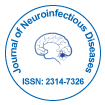A Brief Discussion on Nerve Tissue Injury
Received Date: Jan 02, 2023 / Published Date: Jan 31, 2023
Abstract
An injury to the nervous tissue is a nerve injury. There isn’t a single classification system that can cover all of the different ways nerve injuries can happen. In 1941, Seddon established a classification system for nerve injuries based on the three primary types of nerve fiber injury and the degree to which the nerve remains continuous. However, peripheral nerve injuries are typically categorized into five stages based on the extent of damage to both the nerve and the surrounding connective tissue, as supporting glial cells may be involved. In contrast to the central nervous system, the peripheral nervous system is capable of neuro regeneration. The major events that Wallerian degeneration, axon growth and regeneration, and nerve tissue innervation With respect to the axis of the nerve injury, peripheral regeneration takes place. The end of the injured neuron that is still attached to the neuron cell body is referred to as the proximal stump. It’s the part that grows again. The injured neuron’s end, which is still attached to the axon, is referred to as the distal stump. The stump is still capable of regenerating its axons, despite being the part of the neuron that will degenerate.
Citation: Kawamura Y (2023) A Brief Discussion on Nerve Tissue Injury. J Neuroinfect Dis 14: 433.
Copyright: © 2023 Kawamura Y. This is an open-access article distributed under the terms of the Creative Commons Attribution License, which permits unrestricted use, distribution, and reproduction in any medium, provided the original author and source are credited.
Share This Article
Recommended Journals
Open Access Journals
Article Usage
- Total views: 938
- [From(publication date): 0-2023 - Apr 04, 2025]
- Breakdown by view type
- HTML page views: 635
- PDF downloads: 303
